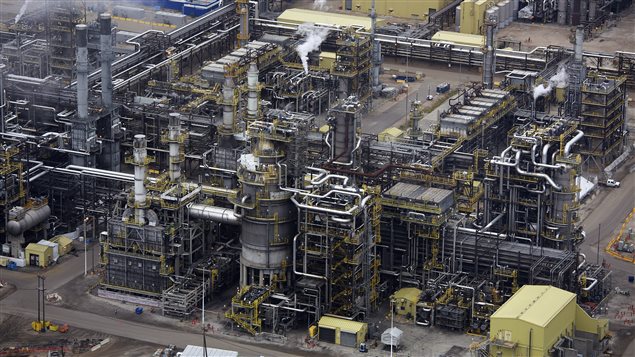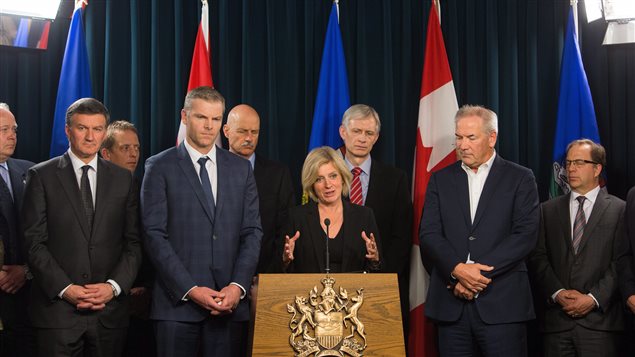Oil sands facilities north of the town of Fort McMurray, which was devastated by a raging wildfire last week, have not been damaged and are ready to begin production within days, Alberta Premier Rachel Notley said after a meeting with the leaders of Canada’s energy companies on Tuesday.
Notley met with industry leaders to discuss the impact of the growing wildfire on oil production, the economic engine of the western Canadian province and Canada in general.
The devastating wildfire that decimated Canada’s unofficial oil sands capital last week, destroying over 2,400 structures and forcing about 90,000 residents of Fort McMurray and surrounding communities to flee their homes, has joined another fire and now covers 229,000 hectares (2,290 square kilometres) more than three times the surface area of New York City, officials said.
Oil patch impact

The fire has also knocked out the majority of Canada’s oil sands production, taking off-line about 1 billion barrels of oil per day, said Steve Williams, President and CEO of Suncor Energy.
“Operators have committed to restarting production as soon as they can and they have identified critical initial steps that must be taken to help safely restart production in this region,” Notley said.
These include ensuring that the energy infrastructure serving the oil sands industry such as pipelines and electricity are operational, as well ensuring the safe transportation of workers and goods by road and by air, the premier said.
Williams said oil sands operators are working on assessing the damage to this critical infrastructure. While it appears the pipelines that are buried under ground have remained largely unscathed, the fire melted most of the power lines in the affected areas, he said.
Most operators located north of Fort McMurray can resume operations with a few days, Williams said. However, those located southeast of Fort McMurray, in the fire zone, will take a lot longer to get online, depending on the damage they suffered.
Resilient industry

Fortunately, the majority of oil production is concentrated north of Fort McMurray and was not affected by the fire directly, Williams said.
“The industry, the community, and its people are resilient, and that resiliency will allow industry to return to full production and provide North America and other markets the energy the world needs,” said Tim McMillan, President and CEO of the Canadian Association of Petroleum Producers.
But participants of the meeting agreed that full production will resume only after “it is absolutely safe to do so” for personnel, as well as the environment, Notley said.
Notley thanked energy companies and industry contractors for their “tremendous efforts” during the height of the crisis.
“Their role with the evacuation, with temporary housing and relocations of tens of thousands of Albertans was absolutely essential to the success we have achieved so far,” Notley said, referring to the fact that over 25,000 Fort McMurray residents were welcomed at oil sands mining camps north of the city when their only escape route south was cut off by the fast-moving blaze.
“These humanitarian efforts were happening while companies were also taking precautionary measures to secure their own facilities and reduce oil production.”







For reasons beyond our control, and for an undetermined period of time, our comment section is now closed. However, our social networks remain open to your contributions.